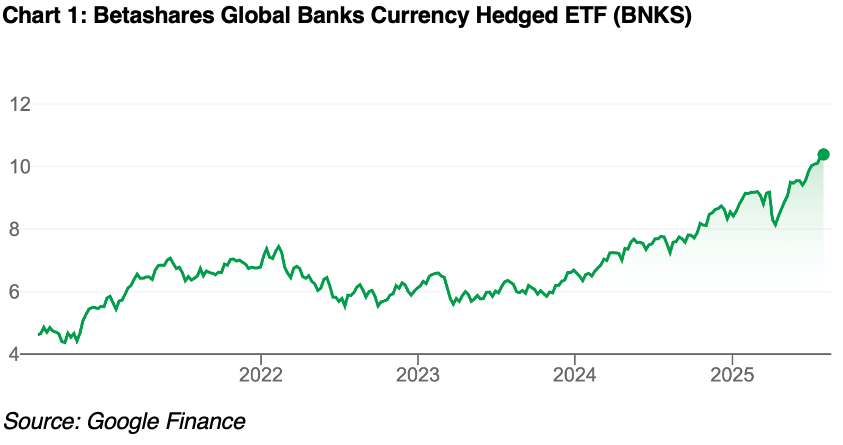Artificial Intelligence (AI) hype grows each day. Some commentators argue AI will decimate the white-collar workforce, particularly entry-level jobs, within a single year.
Others say AI will transform law, accounting, engineering, management consulting, marketing and other knowledge-based industries.
Maybe. I’ve watched markets long enough to know change for companies is usually harder than people expect and more incremental.
Yes, some people will lose their jobs because of AI and some industries will get a productivity boost. But I wouldn’t bet my portfolio on AI winners and losers.
History shows there are usually many more losers than winners from emerging technologies. Moreover, that the big winners in the long run are usually established firms that use new technologies to boost their operations.
Banks are interesting in this regard. They have as much to gain as any industry, possibly more, from integrating AI into their operations.
Start with call centres. AI-optimised tools like speech analytics and real-time agent assistance will enable banks to a) reduce call centres and b) improve call-centre quality by returning more centres to the bank’s home country.
Call centres are labour-intensive and the average cost of a human-answered call to a bank is US$5-$15, according to industry estimates. Multiply that by thousands of calls to banks each day, and AI-powered call centres promise big savings.
This change is already underway. The Commonwealth Bank this week announced it will axe 45 call-centre jobs, replacing them with an AI chatbot to handle customer queries. Expect other Australian banks and large customer-facing organisations to follow with AI-driven job cuts to the call centres.
Software coding is another potential cost saving for banks from AI. So, too, using AI for process automation on checking around Know Your Client legislation and other regulatory compliance and risk assessment.
In time, banks will use AI to aid fraud detection and prevention, as well as credit scoring and loan monitoring. I can see AI increasingly trawling through company accounts to help banks understand when the risk of a loan default rises.
On the revenue side, banks will use AI to take personalised marketing to new levels by anticipating what customers need and what they will do next.
In wealth management, using AI to tailor financial plans for bank customers could be a huge opportunity, given the cost of using a human financial planner, for many people. The result: more cross-promotion and upselling of bank products.
Then there are the potential benefits of AI for bank divisions such as insurance, asset management, and treasury and markets. So many parts of banks, which are giant knowledge-based organisations, could benefit from AI.
McKinsey & Co, a management consultancy, this year estimated that AI could create as much as US$340 billion a year in value for global banks.
But for all the potential, banks generally have a mixed record in scaling latest technologies. Many banks are still in the experimental phase of AI, meaning gains from these technologies may still be a long way off or could disappoint.
The Commonwealth Bank has been an exemplar in technology adoption – its tech advantage over local rivals is a reason for the big gap in its performance and valuation. Other local banks have been less adept at exploiting technology.
Still, it would be a brave – or stupid – bank Board that does not quiz management about the integration of AI within the organisation. Market pressure on banks and other firms to harness AI will intensify over the next few years.
If they get their act together, banks are prime candidates to win from AI. They have the scale to test and implement the latest AI technologies, and greater scope to magnify cost savings from AI.
Banks are also less unionised than many industries. There should be less resistance to AI-driven job cuts in banking compared to the public service, education, hospitals or other more unionised sectors – enabling faster uptake.
Investing in banks

That’s an excellent return given the portfolio quality of BNKS, which invests in 60 of the world’s largest banks. At a country level, almost half of BNKS is in US and Canadian banks. The rest is mostly in Asian and European banks.
My interest in BNKS was not due to AI. I thought global banks looked a lot cheaper than Australian banks, particularly the Commonwealth Bank, which is among the world’s most expensive banks based on its Price Earnings (PE) ratio.
Like many, my call on CBA being overvalued was too early. It kept rising this year, despite signs it was overvalued.
In the past two months, CBA has fallen almost 9% from its 52-week high to $174. It has still had a cracking year, but long-term investors should take some profits (a strategy I have outlined in recent weeks) and rotate into better-value assets.
In addition to attractive relative valuations, I thought global banks would benefit from structurally higher interest rates, which aids their Net Interest Margin (the difference between interest paid and received) to a degree (provided higher rates don’t lead to spike in bad debts) and an improving global economy.
AI has lately become part of my thesis for investing in global banks. To be clear, it’s not the main reason. I still think gains from AI for banks will take longer and be more incremental, at least at the start.
Still, the long-term upside from AI for global banks is undeniable. Yes, much can go wrong with AI implementation. But if banks harness AI, they could boost productivity and earnings over time. In turn, that would imply higher valuation multiples for banks, particularly European banks trading on single-digit PEs.
Gains in BNKS might be slower from here, but I am far from giving up on it or suggesting it’s time to take profits from that Exchange Traded Fund (ETF).
BNKS’ average forward PE ratio was only 9.97 times, and its price-to-book ratio was 1.32 times at end-June 2025, Betashares data shows. In contrast, CBA’s forward PE is a whopping 26 times and its price-to-book is 3.8 times. The Australian share market’s average forward PE is about 17 times.
Yes, CBA is a valuation outlier among Australian banks. But NAB, Westpac and ANZ trade on significantly higher PE multiples than BNKS, despite operating in a much smaller market than the US and Europe.
I suspect US banks will capitalise on AI faster than other global banks, given they are closer to the real AI action and face greater investor pressure to integrate AI into their operations and boost productivity.
In five to 10 years, global banking could look very different thanks to AI. Call-centre chatbots and compliance automation are just the start. The long-term potential is fundamentally re-engineering banks and downsizing their headcounts through AI – and changing how customers interact with them. If that happens – and it’s still a big ‘if’ at this stage – banks will need to be revalued higher.
The main risk for banks is AI leading to widespread job losses, which in turn could create more defaults on banks loans from unemployed white-collar workers – a risk that AI doomsayers are overstating.

